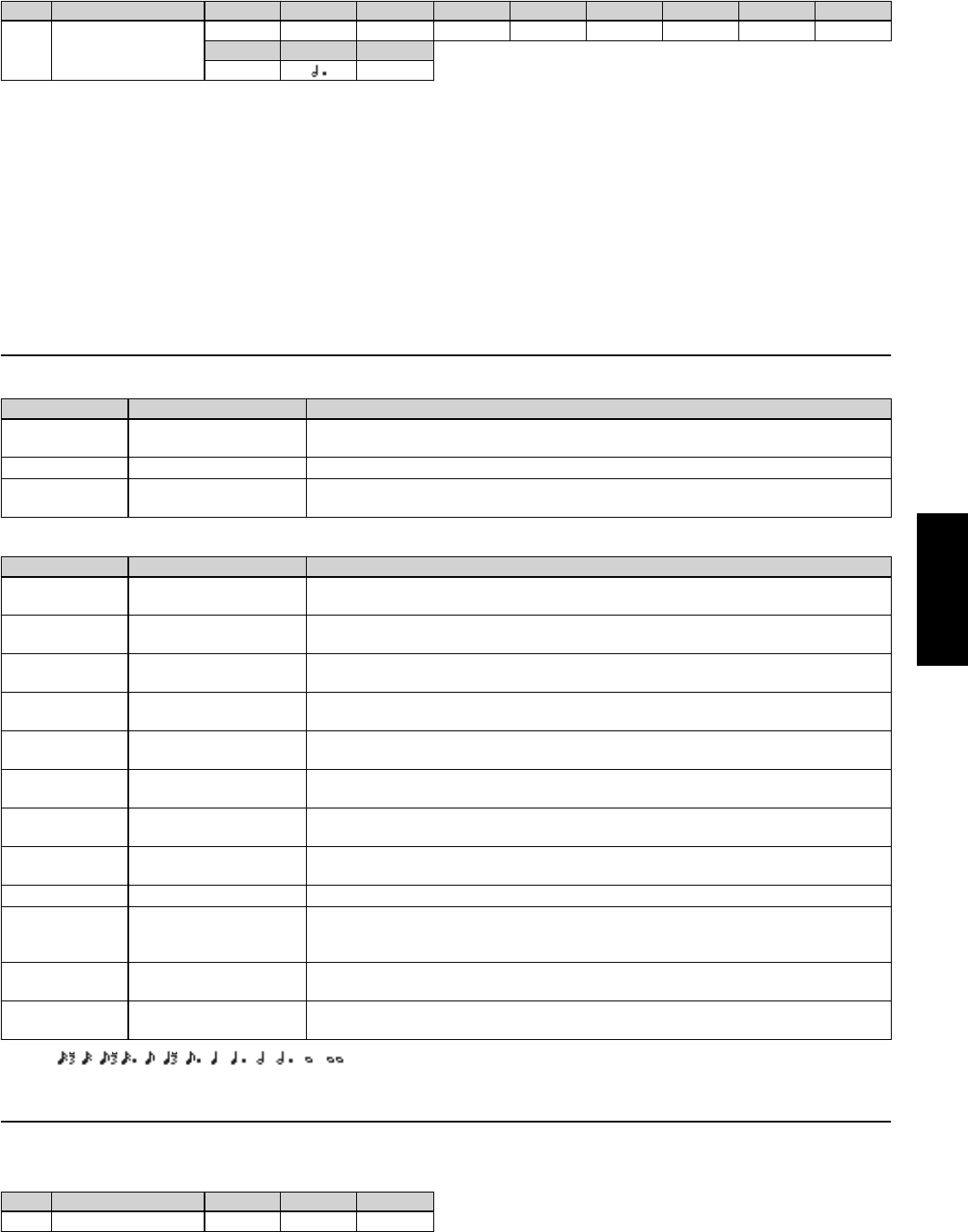
SPX2000—Owner’s Manual 53
Modulation
■Fine parameters
Tremolo (PRESET bank)
This effect cyclically varies the volume, producing amplitude modulation (AM).
Each aspect of the sound is controlled by the following effect parameters.
Modulation signal: FREQ., DEPTH, WAVE
Tempo synchronization: SYNC, NOTE, TEMPO
Filter/equalizer: LSH G, LSH F, EQ G, EQ F, EQ Q, HSH G, HSH F
Output level: OUT LVL, MIX BAL.
Parameter details
■Basic parameters
■Fine parameters
Effect list
The following tables show the default parameter values for the effect belonging to the Tremolo type (PRESET bank).
■Basic parameters
No. Effect name MIX BAL. OUT LVL LSH G LSH F EQ G EQ F EQ Q HSH G HSH F
61 SYMPHONIC
100% 100% 0.0 dB 125 Hz 0.0 dB 1.00 kHz 2.8 0.0 dB 10.0 kHz
SYNC NOTE TEMPO
OFF —
Parameter name Range Explanation
FREQ. 0.05—40.00 Hz
Speed of modulation (AM). Increasing this value will make the volume change repeat at a shorter
interval.
DEPTH 0—100%
Modulation depth. Increasing this value will make the modulation deeper.
WAVE Sine, Tri, Square
Waveform of the modulation signal. This will affect the character of the modulation.
You can choose Sine (sine wave), Tri (triangle wave), or Square (square wave).
Parameter name Range Explanation
MIX BAL. 0—100%
Balance between the original sound and effect sound. At a setting of 0% only the original sound
will be output; at a setting of 100% only the effect sound will be output.
OUT LVL 0—100%
Output level after the original sound and effect sound have been mixed.
Decrease this value if you want to lower the output. At a setting of 0% there will be no output.
LSH G –12.0—+12.0 dB
Gain of the low shelving filter. This adjusts the volume of the low-frequency region. Positive (+)
settings will boost the low-frequency region, and negative (–) settings will attenuate it.
LSH F 21.2 Hz—8.00 kHz
Frequency of the low shelving filter. The LSH G gain applies to the frequency region below this set-
ting.
EQ G –12.0—+12.0 dB
Gain of the equalizer (peaking type). This adjusts the gain of the frequency region specified by EQ
F. Positive (+) settings will boost the region, and negative (–) settings will attenuate it.
EQ F 100 Hz—8.00 kHz
Frequency of the equalizer (peaking type). The EQ G gain setting will affect the region around this
frequency.
EQ Q 10.0—0.10
Q (sharpness) of the equalizer (peaking type). This indicates the sharpness of the equalizer fre-
quency response curve. Higher values will produce a sharper curve.
HSH G –12.0—+12.0 dB
Gain of the high shelving filter. This adjusts the volume of the high-frequency region. Positive (+)
settings will boost the high-frequency region, and negative (–) settings will attenuate it.
HSH F 50.0 Hz—16.0 kHz
Frequency of the high shelving filter. The HSH G gain applies to the frequency region above this setting.
SYNC ON, OFF
Switches tempo synchronization on/off. If this is ON, the speed of modulation will synchronize to
the tempo synchronization source specified by “TEMPO SOURCE” (page 23). The NOTE value
will be set to the synchronized tempo value.
NOTE
*a
*a.
This parameter is used for tempo synchronization. If SYNC is ON, the FREQ. value will be set
according to this value and the TEMPO value. This value is ignored if SYNC is OFF.
TEMPO 25—300
This parameter is used for tempo synchronization. If SYNC is ON, the FREQ. value will be set
according to this value and NOTE. This value is ignored if SYNC is OFF.
No. Effect name FREQ. DEPTH WAVE
70 TREMOLO 6.00 Hz 56% Sine


















